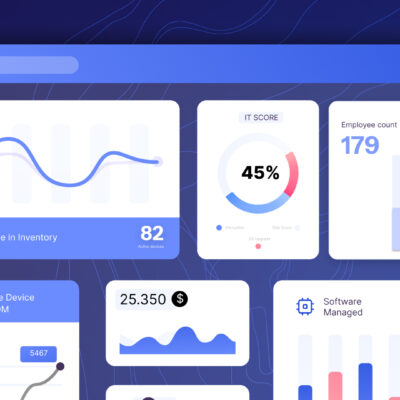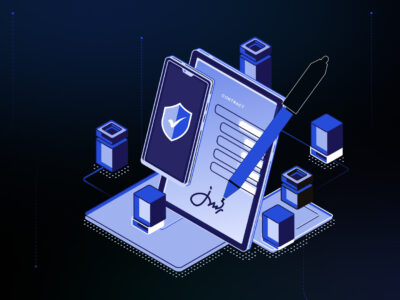IT Security Assessment: A Step-by-step Guide for IT Leaders

As an IT manager, you must safeguard company data and devices despite the escalating frequency and complexity of cyberattacks. A proactive approach to IT security is no longer just a preference but a necessity. IT security assessments help organisations become proactive and resilient to cyber threats.
We cover various steps for conducting a thorough IT security assessment. Let us delve into each step with actionable insights and provide valuable resources to ensure your organisation-wide security is robust.
Why are IT Security Assessments Crucial?
IT security assessments are cornerstones of modern organisational resilience. With the proliferation of cyber threats, data breaches, and regulatory requirements, businesses must proactively evaluate and fortify their digital defences. IT security assessments are crucial as they examine the IT resources of a company and provide valuable insights.
Through regular assessments, businesses can identify potential risks, address security gaps, and implement effective countermeasures to safeguard sensitive data, preserve customer trust, and maintain operational continuity. Beyond the tangible benefits, IT security assessment also assists in achieving regulatory compliance, which is vital to avoid hefty fines and reputational damage.
Want to conduct a fool-proof IT security assessment? Here is the step-by-step process:
Step 1: Defining Scope and Objectives
Outlining the objectives of your IT security assessment is the foundational step. Identify the critical assets, networks, and systems to evaluate. Determine whether you focus on vulnerability assessment, compliance assessment, or a comprehensive security audit.
Step 2: Gather Information
Accurate information fuels effective security strategies. Compile network diagrams, system architecture documents, asset inventories, and access control records. This information will aid in assessing potential vulnerabilities and devising security strategies.
Step 3: Vulnerability Assessment
Leverage automated tools such as Nessus, Qualys, and OpenVAS for vulnerability assessments. These tools scan networks, applications, and devices for known vulnerabilities. We advise you to do thorough research before you choose an assessment provider. Remember to find the one that caters to your business’s unique requirements and fits the budget.
Step 4: Penetration Testing
Conduct penetration testing to simulate real-world attacks. Engage ethical hackers or penetration testing companies like Rapid7, Trustwave, or WhiteHat Security. These experts will exploit vulnerabilities to gauge the effectiveness of your security measures.
Step 5: Access Controls and Authentication
Review access controls and authentication mechanisms to ensure only authorised users can access sensitive systems and data. Verify the use of strong passwords, multi-factor authentication (MFA), and proper user access levels by the users.
Step 6: Data Protection and Encryption
Evaluate data protection methods. Implement encryption for data at rest and in transit. Assess how data is stored, transmitted, and protected. Ensure that sensitive data is encrypted both at rest and in transit across databases, communication channels, and backup systems.
Step 7: Network Security
Audit network security measures like firewalls, intrusion detection systems (IDS), and VPNs. Consider integrating advanced threat detection solutions like Cisco’s Firepower or Palo Alto Networks.
Step 8: Patch Management
Maintain up-to-date systems by implementing regular patch management. Tools like Microsoft SCCM and IBM BigFix streamline the process.
Step 9: Incident Response Plan
Regularly review and update your incident response plan. Collaborate with incident response service providers like CrowdStrike or Mandiant for advanced threat detection and response.
Step 10: Employee Training and Awareness
Invest in employee training and awareness programs. Educated employees can thwart social engineering attempts. Train employees through platforms like KnowBe4 or Security Awareness Company.
Step 11: Physical Security
Do not overlook physical security measures. Evaluate access controls to data centres, server rooms, and other critical areas. Unauthorised physical access can lead to significant breaches.
Step 12: Third-Party Risk Assessment
Assess security measures of third-party vendors or partners, if any. A breach in a vendor system can potentially impact your data security. Companies like BitSight and RiskRecon offer third-party risk assessment services.
Step 13: Regulatory Compliance
Ensure your IT systems comply with relevant industry regulations and standards such as GDPR, HIPAA, or ISO 27001. Non-compliance can lead to legal issues and reputational damage. It can also cause financial loss due to hefty fines.
Step 14: Documentation and Reporting
Systematically document the assessments, findings, and remediation efforts. Create a detailed report using templates from organisations like SANS Institute or ISACA.
Step 15: Continuous Monitoring & Improvement
Implement continuous monitoring using Security Information and Event Management (SIEM) tools like Splunk or LogRhythm. Regularly update security practices based on lessons learned.
Want to learn how ZenAdmin can be your partner in safeguarding your devices and data? Get a free demo here!












